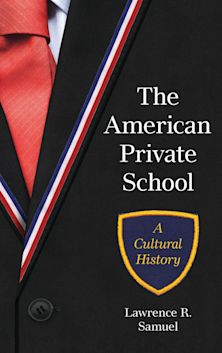- Home
- ACADEMIC
- Education
- Education - Other
- Language and Cultural Diversity in U.S. Schools
Language and Cultural Diversity in U.S. Schools
Democratic Principles in Action
Terry A. Osborn (Anthology Editor) , Casey Cobb (Contributor) , Wanda DeLeón (Contributor) , David Gerwin (Contributor) , Mileidis Gort (Contributor) , Cara Mulcahy (Contributor) , Dina C. Osborn (Contributor) , Sharon F. Rallis (Contributor) , Timothy Reagan (Contributor) , Xaé Alicia Reyes (Contributor)
Language and Cultural Diversity in U.S. Schools
Democratic Principles in Action
Terry A. Osborn (Anthology Editor) , Casey Cobb (Contributor) , Wanda DeLeón (Contributor) , David Gerwin (Contributor) , Mileidis Gort (Contributor) , Cara Mulcahy (Contributor) , Dina C. Osborn (Contributor) , Sharon F. Rallis (Contributor) , Timothy Reagan (Contributor) , Xaé Alicia Reyes (Contributor)
This product is usually dispatched within 3 days
- Delivery and returns info
-
Free US delivery on orders $35 or over
You must sign in to add this item to your wishlist. Please sign in or create an account
Description
Diversity is at the heart of today's education debates. Often, school policies and programs designed to encourage and embrace diversity are met with public ire and a deep misunderstanding of how diversity serves learning. This work explains how diversity is an essential element in classroom settings. As children from around the world continue to pour into U.S. classrooms, an understanding of cultural and linguistic diversity in its broadest sense moves to the foreground. In a post 9/11 world, the benefits of understanding diversity take on urgent meaning.
The introductory chapter, "Participating in Democracy Means Participating in Schools," sets the tone for the discussion to follow. As the geographic backgrounds of immigrants becomes increasingly diverse, religion must be added to previous discussions of race, ethnicity, and language. Thus, the need for the public to understand how shifts in population affect schools, makes this work a vital resource for anyone concerned with education today.
Table of Contents
2 Emergent Possibilities for Diversity in Reading and the Language Arts
3 Bilingual Education: Good for U.S.?
4 Accent and Dialects: Ebonics and Beyond
5 A Case Study in Cultural and Linguistic Difference: The DEAF-WORLD
6 Foreign Language Education: It's Not Just For Conjugation Anymore
7 Multicultural Education Is Good for the United States Beyond Sensitivity Training
8 Policies for a Pluralistic Society
9 What September 11Also Teaches Us
Product details
| Published | Jul 26 2007 |
|---|---|
| Format | Paperback |
| Edition | 1st |
| Extent | 240 |
| ISBN | 9781578866175 |
| Imprint | R&L Education |
| Dimensions | 9 x 6 inches |
| Publisher | Bloomsbury Publishing |
About the contributors
Reviews
-
This text promotes and embraces improvement of diversity along a social activist theme. Student driven curriculum and self-esteem are propounded.
School Library Connection
-
With the idea in mind that America will continue to move toward a truly democratic society, however slowly, the contributors of these eight articles and introduction examine the possibility that language and culture will eventually not be an impediment to fulfilling the idea that America is a democracy.
Reference and Research Book News
-
One in four students in the US come from households speaking languages other than English, so the US would seem to be on its way to fulfilling the national and global bilingual goal that is considered essential in No Child Left Behind rhetoric. However, it appears that the media and politicians continue to use language and cultural diversity as if they were all about dominance. Language legitimacy, or what constitutes 'real language,' becomes a powerful, yet dangerous, construct in the formation of educational policy. After examinations of Ebonics, American Sign Language, and foreign language teaching to native English speakers, contributors question the wisdom of 'the least restrictive environment' policy. Perhaps, especially for deaf students, the policy should become 'the most enabling environment.' Contributors stress that policy and practice in a pluralistic society must include democratic principles of interdependence and equality. Recommended. Teacher-education faculty and teacher candidates, upper-division undergraduate and above.
Choice Reviews


































